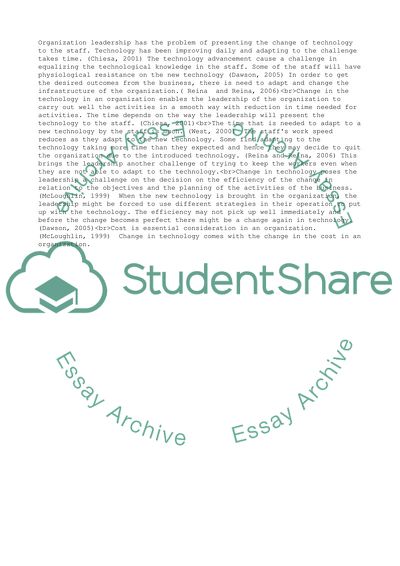Cite this document
(“Organisations today face significantly different challenges from those Essay - 1”, n.d.)
Organisations today face significantly different challenges from those Essay - 1. Retrieved from https://studentshare.org/management/1669689-organisations-today-face-significantly-different-challenges-from-those-of-the-past-for-example-in-terms-of-global-recession-climate-change-terrorism-international-competition-technological-change-and-more-mobile-workforces-it-seems-reasonable-to-sup
Organisations today face significantly different challenges from those Essay - 1. Retrieved from https://studentshare.org/management/1669689-organisations-today-face-significantly-different-challenges-from-those-of-the-past-for-example-in-terms-of-global-recession-climate-change-terrorism-international-competition-technological-change-and-more-mobile-workforces-it-seems-reasonable-to-sup
(Organisations Today Face Significantly Different Challenges from Those Essay - 1)
Organisations Today Face Significantly Different Challenges from Those Essay - 1. https://studentshare.org/management/1669689-organisations-today-face-significantly-different-challenges-from-those-of-the-past-for-example-in-terms-of-global-recession-climate-change-terrorism-international-competition-technological-change-and-more-mobile-workforces-it-seems-reasonable-to-sup.
Organisations Today Face Significantly Different Challenges from Those Essay - 1. https://studentshare.org/management/1669689-organisations-today-face-significantly-different-challenges-from-those-of-the-past-for-example-in-terms-of-global-recession-climate-change-terrorism-international-competition-technological-change-and-more-mobile-workforces-it-seems-reasonable-to-sup.
“Organisations Today Face Significantly Different Challenges from Those Essay - 1”, n.d. https://studentshare.org/management/1669689-organisations-today-face-significantly-different-challenges-from-those-of-the-past-for-example-in-terms-of-global-recession-climate-change-terrorism-international-competition-technological-change-and-more-mobile-workforces-it-seems-reasonable-to-sup.


